What should you look for in a chef’s knife? We find the best kitchen knives in the UK 2021
This article contains affiliate links. We may earn a small commission on items purchased through this article, but that does not affect our editorial judgement.
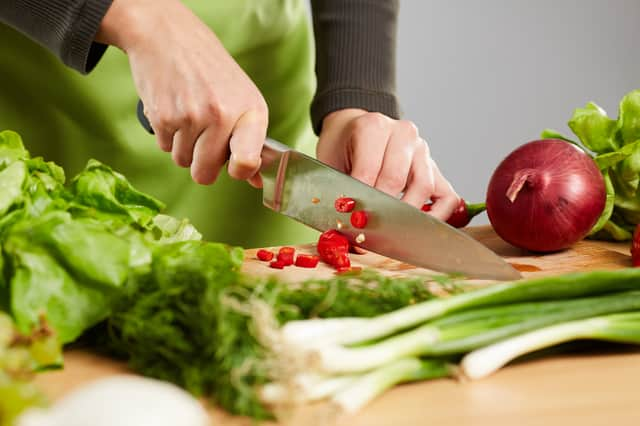

From the beginner to the professional chef, you quickly realise the importance of a good knife in making your time in the kitchen so much easier.
What to look for in a chef’s knife
At the top of the list of which knife to have has to be the chef’s knife, the all-rounder, which once you learn to use correctly, can turn to any task needed.
Chef knives are also one of the largest in the drawer, usually around 20cm long; some may be smaller, some larger.
Brandishing a large chef’s knife does not automatically make you a better cook, quite the opposite, working with a knife that is too big can potentially be dangerous.
Make sure you’re careful with your knife
Always use a knife that feels safe and secure for you.
Weight and balance must be considered when choosing a knife, too heavy and hard to operate safely. Choose the one you feel works for you; otherwise, it may feel awkward.
The blade will vary by style and can be more rounded on some than others, made of various metals, adding qualities such as hardened blades, stay sharp edges and anti-corrosion.
Full tang knives are where the blade continues through to the end of the handle, which can be heavier. A two-part blade and handle knives will undoubtedly be more lightweight, with any imbalance usually offset with added weight in the handle.
How to care for your knife
Caring for your knife means regularly sharpening to keep a clean, sharp edge, and where possible, keep knives away from the dishwasher. Instead, wash by hand and dry immediately after use and put away either in a knife block or drawer immediately.
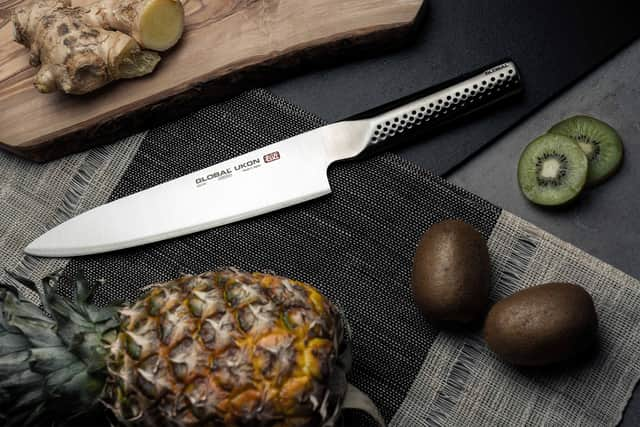

The award-winning knives brand Global has been wooing chefs and cooks for years with their stylish knives by Yoshikin in Japan.
They liken their craftsmanship to Samurai sword-making, and these knives are sharp indeed.
The finely honed blade made with their own stainless steel Cromova 18 is ground on both sides and at an acute angle that slips seamlessly through meat, fish, vegetables and even the ripest tomatoes.
The knife is light and carefully weighted, making it effortless to use.
These are knives you would never put anywhere near a dishwasher; it will ruin them; a quick hand wash with soap and hot water will suffice as the seamless knife has nowhere to harbour germs.
If the knife seems expensive, you buy one of the sharpest and finely designed commercial chef knives out there and one that should last a lifetime.
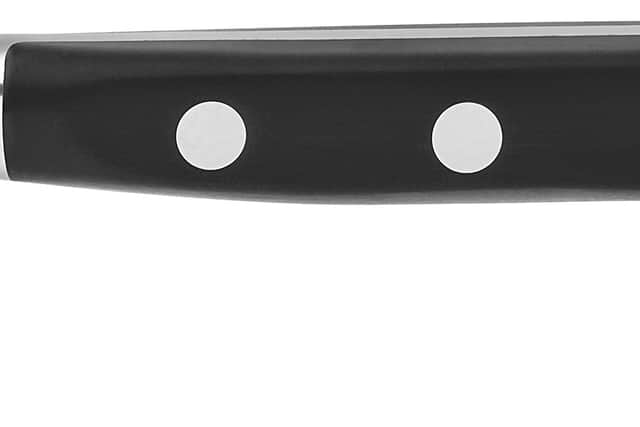

The Stellar Sabatier Santoku may be the cheapest on our test, but do not be put off by that as this is a super entry-level knife.
Santoku is borrowed from the Japanese to represent the three virtues or uses of the knife for cutting, chopping, and dicing.
Though a different shape with a flatter curve coming from the top of the blade, it has similar use and purpose as a European chef’s knife.
To use the Santoku, you need to handle the knife differently from a regular chef’s knife moving it backwards and forwards rather than a rocking motion.
However, chefs love these knives for their precision, especially when slicing, and this one does not disappoint. It is light, with a sturdy handle and is also, surprisingly at this price point, a full tang knife.
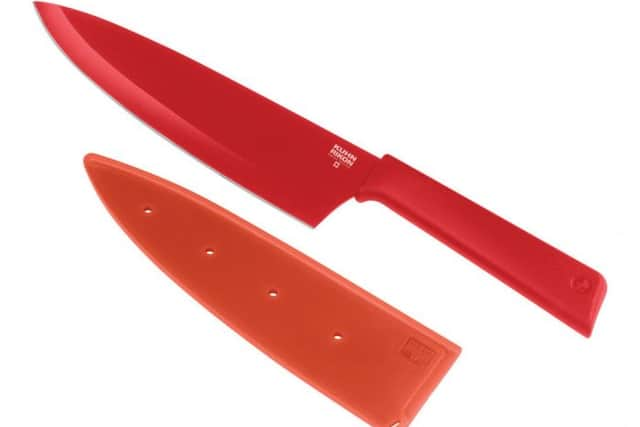

The Swiss-made Colori knife from Kuhn Rikon is called a chef’s knife but is shorter than the standard 20cm/ 8 inches and is also so light we wondered if it could perform like its larger rivals.
Yes, it can.
The lightness makes this an easy knife to use, and its USP of having a non-stick Titanium coated blade is an attribute; the food falls away easily while chopping and slicing, which sometimes can be a little annoying with others.
The Colori’s smaller stature does not compromise its strength, made from Japanese stainless steel; it is not surprising this knife has received design awards.
A low price, a small knife but a big offer with this one.
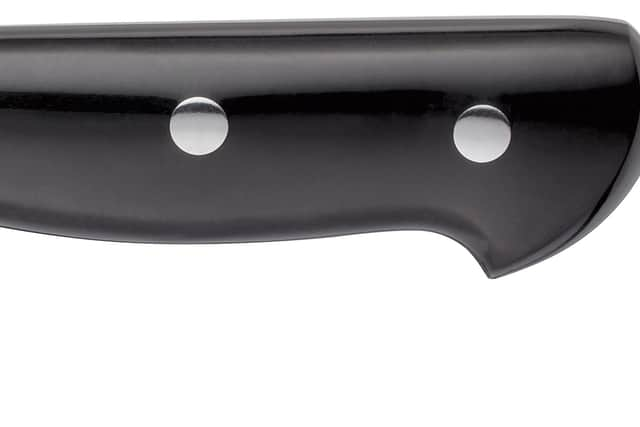

The hardened steel chef knife from Sabatier at Judge comes with a 25-year guarantee; that’s how confident they are of its quality.
They have good reason to feel assured; this knife is lovely, oozing classic good looks with its full tang blade and riveted ergonomic handle.
We found the knife slightly back-heavy, but it was easy to adjust with use, and this slight off-balance did not hinder its efficiency in chopping, slicing, or dicing.
Unusually, they say the knife is dishwasher safe which is not usual practice for a knife, but there is the backup of that guarantee should you need it.
At this price, there is a lot to like about this classic knife.
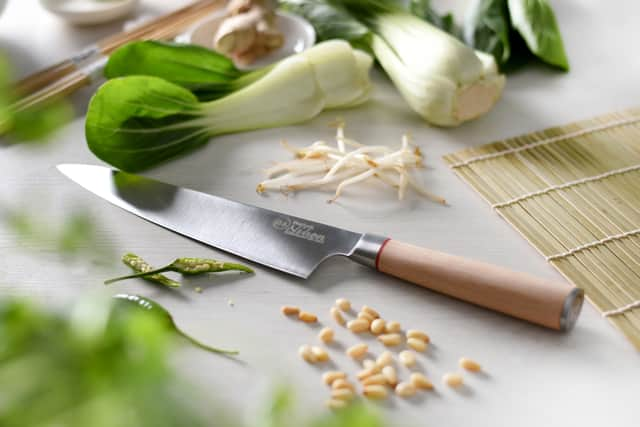

We admit to liking the look of this knife a lot.
It is the only one we tested with a wooden handle, and we found it supremely comfortable to hold; this is also one that most certainly should stay away from the dishwasher.
The knife is made from stainless steel and carbon yet so light and excellent for anyone for whom a heavier knife could be a problem.
Lightness in no way hampers the performance here as the weight of the blade is balanced by a stainless-steel fixing on the end of the handle.
The razor-sharp blade chopped effortlessly through everything we tried.
The Nihon is a super knife to learn to chop, slice and dice if the heavier knives are too scary, without spending too much money.
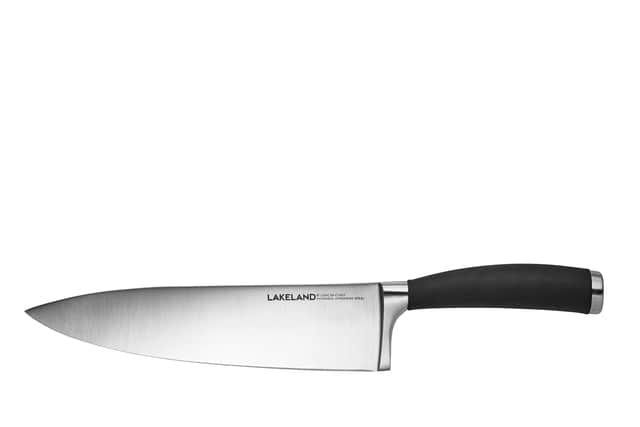

This professional-grade knife from Lakeland is solid and robust, made from Japanese steel and also has the thickest blade we tried, which for some may be slightly too heavy, but others may prefer that.
We were very impressed with Lakeland’s Select-Grip knife handle, which is soft and comfortable.
Also, the grip is non-slip and knowing it is secure brings added confidence, a bonus to those learning to handle professional quality knives.
The handle also has a steel balance cap to weight the knife correctly, making precision cutting more effortless, and there’s added extra with a safety sheath to protect both the knife and fingers when in storage.
The Lakeland is a lovely sturdy knife at a reasonable price, though the weight may not suit everyone.
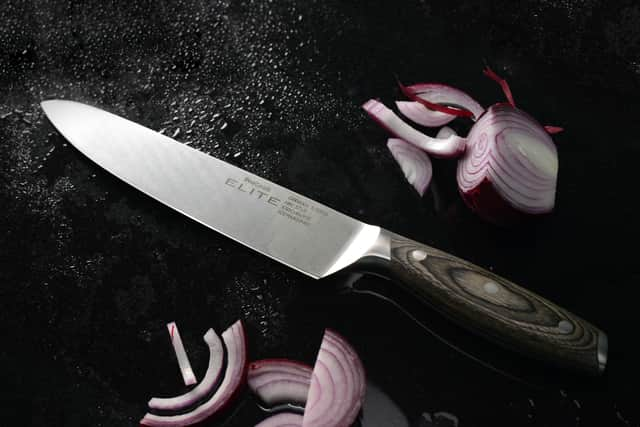

The Elite Ice from Procook is a sturdy looking knife with a unique and gorgeous handle made from Micarta - layers of linen, canvas, burlap, sometimes even paper or leather saturated with phenolic resin.
The sturdiness of the knife comes from German stainless steel with 0.5% carbon for good edge retention and a promise of corrosion resistance.
But it is their sci-fi sounding cryogenics that intrigued us. The metal is subjected to a staggering -70C for three hours, altering the metal structure and giving the knife outstanding sharpness.
We found the knife scarily sharp with excellent balance; it slips through everything smoothly and efficiently.
This is an outstanding knife for the price, though the weight may be a tad heavy for some.
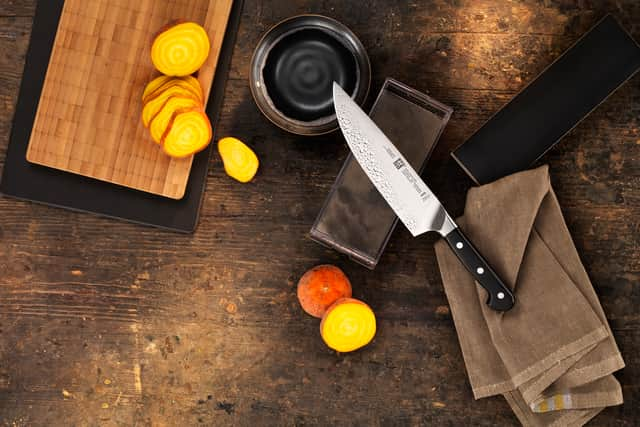

The Zwilling knife is extraordinarily good looking and beautifully crafted.
The blade is forged from a single piece of steel and ice-hardened using a process called Friodur® which giving a robust and super sharpness to the knife, which we found delightful to use.
The 20cm generously curved blade makes slicing, dicing, and chopping easy, and the generous securely riveted handle is both comfortable and secure to hold.
Moreover, even though made of such good quality steel, it’s not overly heavy, so it will suit most hands.
The ZWILLING® Pro is an investment piece and one that, if cared for correctly and never ventures anywhere near a dishwasher, should last for many years and could make the lifetime guarantee the knife comes with redundant.